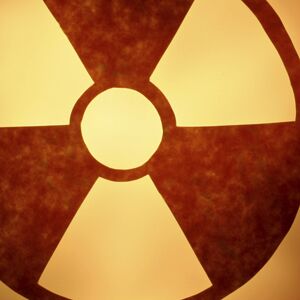
The Fukushima 50 and Lessons for America
Almost as shocking as the massive tsunami that wiped away hundreds of miles of Japanese coastline and thousands of lives was the reaction of the Japanese. A shocked Telegraph asked: “Why is there no looting in Japan?”
The response of the Japanese has been calm, orderly, lawful and sacrificing.
A huge chunk of Japan’s coastline is damaged, whole cities are gutted, widespread power outages blanket much of the nation, thousands are short on food and water, people wait in line for eight hours for less than a tank of gas, hundreds of thousands of people are displaced, nuclear reactors are on the verge of meltdown—and the Japanese are showing the world an example of composed restraint and orderliness.
Commentators and experts have offered several explanations. The Los Angeles Times says their unexpected response is due to their culture and rooted in their history. Disasters and calamities are a regular feature of their myths and fairy tales. It is something that as a people they just deal with because earthquakes, volcanoes and tsunamis are their reality. “There is a great deal of pride in the idea that Japan is a long-suffering nation,” says University of Tokyo lecturer Roland Kelts.
Others say it is due to Japan’s rugged landscape and the spirit of cooperation needed to be successful. Or it is the strong influence on young people by the older generation, which remembers the destruction of the war and what it took to rebuild. Maybe it is just Japan’s effective disaster preparedness that reduced the incentive.
But whatever the true cause, doesn’t it make you picture what Americans would be like under similar circumstances?
Earthquakes are progressing in a clockwise direction around the Pacific Ring of Fire. Chile. New Zealand. Japan. Who is next? California? A massive earthshaking event is coming—the only question is when. But when the Big One strikes, will Californians respond more like the Japanese, or the New Orleanians?
If Hurricane Katrina is anything to go on, the picture isn’t pretty. In fact, it is condemning. New Orleans’s lawlessness, selfishness, abdication of leadership and duty, rampant crime, murders and descent into barbarism is our precedent of what happens when disaster strikes this side of the world. Instead of a people coming together like the Japanese, the populace of one of America’s most important cities made it a lawless jungle almost overnight.
Now picture a Japan-scale catastrophe in Southern California, home of the Rodney King riots. Picture Los Angeles minus food, fuel and infrastructure—but stacked with guns, gangs and simmering racial tensions. Add in addictions to big government nannyism (in New Orleans, people were warned to evacuate, but many stayed put simply because the government did not come and actually remove them). The result is that many of America’s big cities are just one “act of God” away from complete social breakdown.
The famous 1994 Northridge earthquake was a 6.7-pointer, and by and large, California coped pretty well. But that was nothing compared to what hit Japan, or what is likely to eventually hit California. Back then, there was no shortage of food or shelter. There was plenty of fuel. People could easily access aid. There was no tsunami. And there was no nuclear meltdown threat.
An 8.7 quake (one comparable to Japan) striking California would unleash an astounding 731 times more destructive power than what happened in Northridge.
Would California buck up under that kind of disaster?
It is almost taken for granted in America today that when disaster strikes, that is your opportunity to go out and grab yourself a television from the broken windows of your nearest retailer. People almost expect that there will be looting, rioting and widespread crime.
In the aftermath of Japan’s tsunami, an older woman was determinedly repairing her house, which was one of the few houses still standing in the town. When asked why she bothered, when everything else was almost completely destroyed, she said: I have to fix my house so I can help others fix theirs.
The spirit of sacrifice shown by many of the Japanese is impressive. Consider the Fukushima 50. Of all the stories coming from Japan, the one that will stick with me the most is not the massive walls of water and fire sweeping away whole cities, nor the broken matchbox debris, or the shell-shocked faces of school children.
It is of a sober line of men in white protective suits and masks heading back into the Fukushima nuclear power plant to try to repair it. Dead men walking. These scientists and technicians knew it, too—better than anyone. Yet in they went. The Inquirer called it a desperate “suicide mission” to save the lives of others.
The white suits are next to useless with the amounts of radiation they are potentially dealing with. It was reported that radiation reached 400 millisieverts per hour on March 15 at the plant’s No. 3 reactor. A nuclear industry employee is normally only allowed to be exposed to only 20 millisieverts in a year. Each hour these men could have been exposed to multiple years’ worth of radiation. And they have been rotating in and out of the plant for 11 days.
What an example of sacrifice.
With Japan’s disaster, we see story after story about cooperation, heroism, resilience and admirable patience and endurance in the face of adversity. We see a nation coming together—perhaps in a sense, even growing stronger—in the midst of horrible catastrophe. We see a nation of law and order even when the institutions of law and order are literally wiped off the map.
Japan’s reaction to the disaster puts America to shame. In Fukushima, we see what New Orleans should have been, and what California should be. We see character in the midst of crisis. We see heroes, not in capes, but in white radiation suits and wet galoshes nailing their neighbors’ houses back together.
